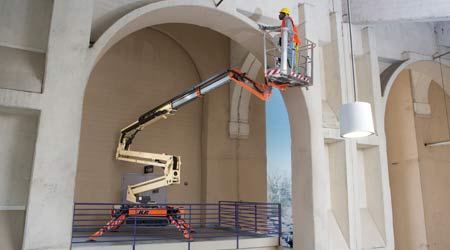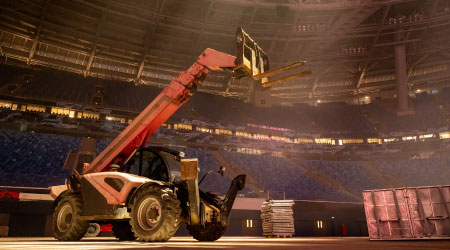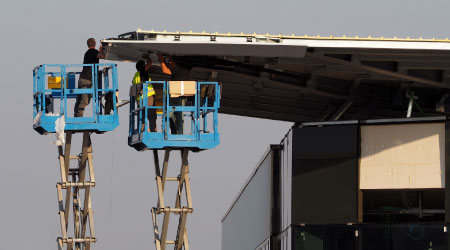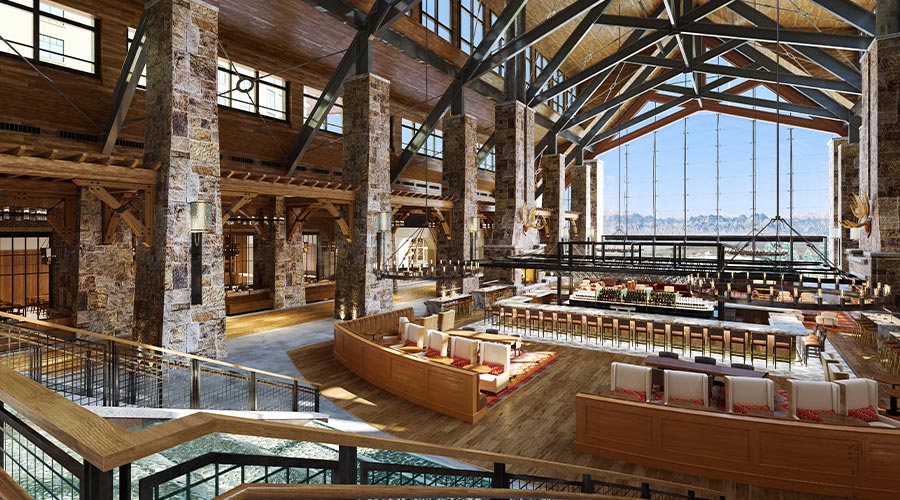 By conducting risk assessments before a project begins, managers and technicians can better understand the conditions a work site presents and the type of lift required.
By conducting risk assessments before a project begins, managers and technicians can better understand the conditions a work site presents and the type of lift required.Lifts: Equipment Advances Enhance Safety Features
Advances to lift features and functions can help operators work more safely and productively.
Just as safety standards and training methods for MEWPs have improved, so have the functions and features of the units. Manufacturers are continually upgrading MEWPs with features designed to help operators work more safely and productively. As a result, managers and operators need to remain abreast of the changes and their impact on safety.
Advances in safety features and functions include anti-crush and entrapment devices, as well as load sensors and load-height restrictions.
“The thing I would say is one of the best new advances in the new types of lifts in the industry are added safety features like crush guards,” Kesser says. “The new types of lifts in the industry help facility managers perform their work at heights being safer, easier, and more economically than they have in the past.
“The second new advancement I believe has been a great addition is (that) now there is new technology that protects the operator. In case the operator becomes incapacitated, this crush guard system prevents the machine from continuing to move and stops function in case the operator cannot get to the controls.”
With the implementation of the A92, manufacturers have made additional safety updates, including the use of load sensors.
“The new standards require load sensing in all equipment,” Smith says. “The machine is going to measure how much weight is in the platform and not let the operator overload the machine. That is a pretty big change here in the United States”
With the new load sensors come envelope restrictions. When the machine carries a certain amount of weight, it will not go past a certain height. When the load decreases, the MEWP can extend further.
“The bigger boom lifts will have envelopes,” Smith says. “So you might have 1,000-pound weight limit in a small envelope and 700-pound limit at (the lift’s) full reach. If you have 800 pounds in that smaller envelope, it won’t let you get into that fully extended envelope.”
Before beginning the specification process, managers need to understand the kind of work the MEWP will be used for and the amount of weight it will have to carry. With this information, managers are more likely to specify products that meets technicians’ needs.
“Managers need to know their work environment,” Kesser says. “An accurate understanding of the work environment and the needs required is imperative. Every work environment is different, and each has its own challenges and safety requirements. The first thing that any facility manager should do is look at each facility as its own work site.”
One of the most effective ways for managers to understand the job site is to conduct a risk assessment.
“With the risk assessment, you’re looking for any hazards that may be presented to the MEWP,” Smith says. “Managers should look for any power lines or electrical lines in the area. They need to pay attention to the ground conditions and if it can support the weight of the machine. Is there an underground take, unlevel ground, or trenching going on?
“Basically, managers need to walk the work site and make sure that anything that poses a hazard to the aerial work platform is identified and mitigated. Part two of that risk assessment is having a rescue plan as well if an operators becomes stuck.”
Managers also need a plan to rescue operators who become stuck if the machine breaks down and is stuck at height. A second rescue scenario involves an operator who is ejected from a MEWP and is left hanging from a safety harness.
“This is a more critical incident because there is something called compression injury,” Smith says. “Hanging from that harness for an hour isn’t something they can do. You need to get that person down quickly. You have to have a plan in place that says this is what we’re going to do and it goes beyond calling 911. You have to say, ‘What are we going to do in this situation if somebody is trapped up there?’ ”
Related Topics:














